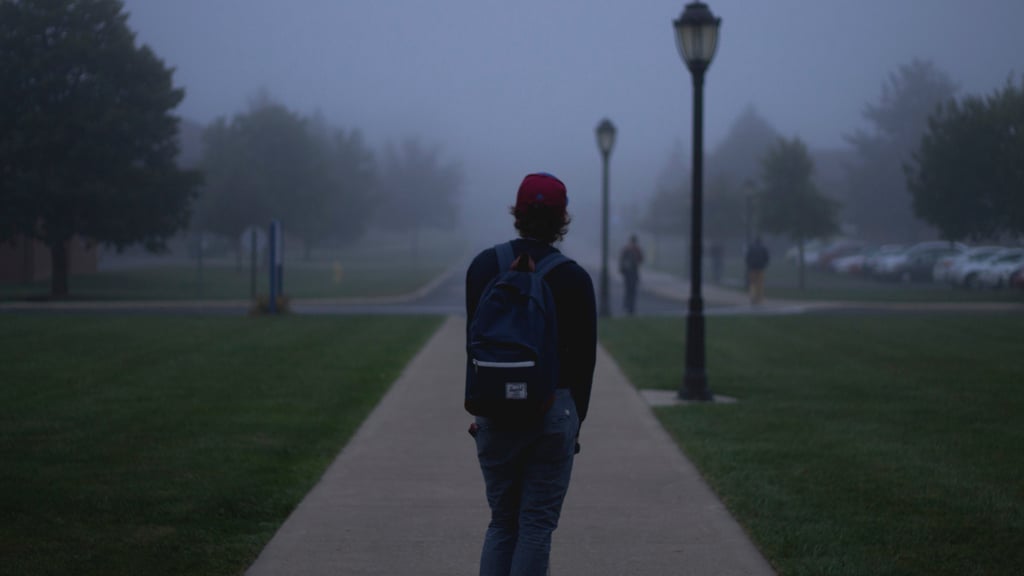More Questions Than Answers; One Teachers Reflection on Student Isolation
by Jude Miqueli, on Feb 25, 2018 8:33:44 PM

At times of grief and tragedy it is hard to know what to write because it all seems so terrifying and the feeling of helplessness swells. One thing I do know that provides comfort and clarity is talking to other teachers experiencing the same thing. Maybe you have thoughts or wisdom to share and with this dialogue we will unite and be stronger in fighting the epidemic of violence within schools. I was a high school student when Columbine happened and now I'm a teacher. I know what it feels like to be an outsider in high school. I came out, or rather was outed, in high school and dealt with homophobia from family and friends. Within my educational experience, from 8th through 12th grade, each year one student committed suicide in my school. I know I can connect with students and teachers who are going through trauma because of these personal experiences. Like many teachers, I'm an empath who is hyper aware of energy, moods, and behavior. But what do we, teachers, have the power to do right now to prevent a mass shooting at our school?
You read the news and see the momentous student led National School Walkout protesting guns while in Alabama a lawmaker proposed a bill that would allow teachers to carry concealed pistols if they undergo 40 hours of law enforcement training. As every teacher in this country engages in their own distinct political battle, my question remains, what do teachers do RIGHT NOW in our classrooms with the situation at hand? What do we need? How can we help each other and students? I have more questions than answers because this wasn't a huge part of my teacher training. We did practice lock down drills but this is more advanced. We need to collaborate on a national level.
Teachers already know we should be identifying disturbed students, counseling, connecting, reporting, following up, and checking in. One teacher has as a strategy where she looks for patterns of behavior in students who may be isolated from the class's social life. Glenn Doyle Melton writes, "This brilliant woman watched Columbine knowing that all violence begins with disconnection. All outward violence begins as inner loneliness." Read the full article here: One Teacher’s Brilliant Strategy to Stop Future School Shootings—And It’s Not About Guns
While I think the headline is an overstatement because one teacher's weekly routine is not going to stop future school shootings, I do think she's on to something in regards to connecting and identifying patterns of behavior. A deep awareness of our students and all students in our school is one of many solutions that combined will stand up to this invasion of our academic institutions. Last week a Time Magazine article stated, "Those in the trenches are well aware of the very poor communication that frequently exists between the different caregivers involved in trying to help kids with behavioral problems. Social service agencies, the police, the courts, schools and parents frequently don’t share information with one another, often prevented from doing so by the bounds of confidentiality. Thus, the left hand frequently has no idea what the right hand is doing. When the left hand doesn’t know what the right hand is doing, kids slip through the cracks." Being a lower elementary school teacher with loads of information to distribute for families to digest, I know it's common for emails to get overlooked and phone calls to get ignored. How can we better share information with all of the support services, agencies, and people in our students community when it involves a serious behavior concern? To address this problem from a technological stand point what if we had a severe behavior alert system to notify parents or counselors if we think a student is going to hurt themselves or others?
I remember when I was experiencing depression and isolation in high school. I was completely withdrawn. I put my head down on every desk from first through seventh period. I got away with it because most teachers ignored it. Two teachers didn't. One tapped me very hard as he walked by as to say, "Get up!" That was that, I couldn't sleep there so I was forced to be engaged but no support was offered. My behavior was perceived as defiant when in actuality I needed help from an adult. The other teacher addressed my behavior with discretion, compassion, and empathy. She smiled and was nice to me in class. I remember feeling bad for sleeping in her class because I really liked her and I liked French class. I wanted to learn but because of what was going on in my life I couldn't focus and I wasn't sleeping at night. One day she asked me to stay after class and talk with her. She was kind and offered an accommodation. She let me know she was there for me and gave me the opportunity to give my oral presentation after school since I didn't participate in class.
This is one thing teachers CAN do right now. Continue to nurture relationships with students and families, maintain and INCREASE contact. Dive a little deeper into your students' lives. Take a second look at behaviors and what you are perceiving them to be. What are your biases? Who are your students' friends? What is their home life like and how do they feel? More messages, more praise, more posts, more behavior acknowledgments, more questions.
Teachers and families, what are your thoughts and proposed solutions for educational leaders in regards to supporting isolated students and preventing violence within school communities? Please comment in the section below.
Photo by Alex Jones on Unsplash



